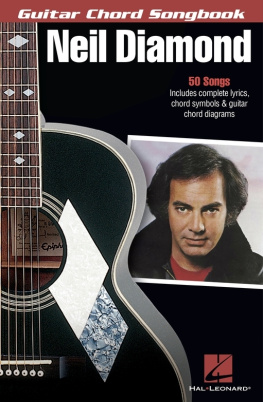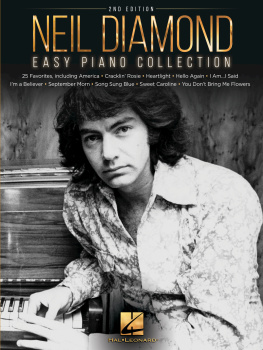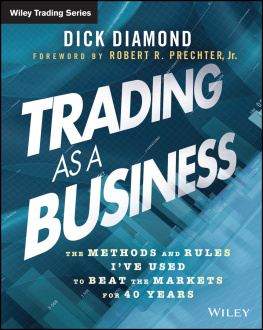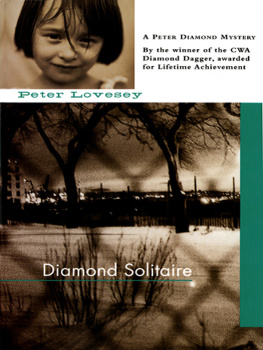Praise for Precious Objects
I am unaware of a book that so intimately captures the strange and strangely beguiling place in which [diamonds] are bought and sold.
The Washington Post
Her passion for her subject takes her to posh Manhattan auction houses and glitzy Las Vegas showrooms; she explores the industrys future and its past; she mines the roots of the diamond trade among Jews in medieval Europe and elucidates the problem of finding matching stones for earrings.... Ms. Oltuski has an ear for [dealers] Shalom Aleichem patois.
The Wall Street Journal
At once global and local, impersonal and intimate, the ins and outs of the diamond industry are grist for the writerly imagination. Oltuski is up to the challenge. The daughter and granddaughter of men in the business, she brings an insiders perspective to the proceedings as well as a keen eye for the telling incident and quirky personal trait.
The New Republic
A polished young guide takes us on an insiders tour of the recondite world of diamonds and garnishes it with an introduction to her family.
Kirkus Reviews
She writes most fascinatingly about the strange characters that clutter the streets.
New York Post
Oltuski awakens her readers to the incredible fact that, in the very shadow of Radio City, a community exists whose business practices would not have seemed all that foreign to merchants in the Middle Ages.... After reading Oltuskis book, you wont be able to look with indifference at diamonds, or the grubby New York street famous for selling them.
Maureen Corrigan, The Penn Gazette
Like a diamonds prism, Precious Objects radiates adventure, mystery, comedy, science, and much more.... This book on diamonds is a prize.
Examiner.com
Alicia Oltuskis firsthand account of New York Citys diamond district is engrossing.... Her book blends ancient, near-ritualistic practices with the twenty-first-century practicalities of commerce.
The Barnes & Noble Review
[Oltuski] turns her attention to every nook and cranny of this natural resource in Precious Objects , an enjoyable mlange of reporting, memories, and profiles of the people who give the diamond industryand a stretch of city streetits sparkle.
BookPage
Oltuski... is a gifted storyteller, whose book resonates all the more because it is told from firsthand experience.
Albuquerque Judaism Examiner
With revealing observations on the centuries-old link between Jews and the diamond industry, and sparkling accounts of her familial ties to the business.... Oltuski, daughter of a diamond dealer, brings clarity in this study of the industry.
Publishers Weekly
A piercing, intensely readable book. Ms. Oltuski guides us through New Yorks diamond business, one of the worlds most fascinating and hard-to-penetrate communities, with great aplomb.
Gary Shteyngart, author of Super Sad True Love Story
Alicia Oltuski is an intrepid journalist able to write with precision and insight about the big issues in the diamond trade and the intimate details of life on Forty-seventh Street.
Tony Hall, U.S. Representative
Beautiful and thrilling, Precious Objects sparkles with life. Alicia Oltuski tells both the story of her family, as glittering as the gems they sell, and the story of the diamonds that have taken them all over the world and across the generations. A fascinating and gripping read.
Jennifer Gilmore, author of Something Red
Epic in scope and wonderfully personal, Precious Objects is an impassioned, insiders take on a complex industry. Whats most dazzling are Ms. Oltuskis characters, who are vivid, outrageous, and never without some glimmers of wisdom.
Beth Raymer, author of Lay the Favorite
Thank you for purchasing this Scribner eBook.
Sign up for our newsletter and receive special offers, access to bonus content, and info on the latest new releases and other great eBooks from Scribner and Simon & Schuster.
C LICK H ERE T O S IGN U P
or visit us online to sign up at
eBookNews.SimonandSchuster.com

Contents
For the members of my family, who have lent me their lives and given me mine, and most of all, for Uri
Chapter 1

Our Brightest Blazes
M y father handed me the chest pack. It was a tan pouch the size of a small outstretched hand. I took off my jacket and slipped the pack over my tank top, on my right shoulder, where the pack rested between my breast and armpit. I slid on my jacket and zipped up. My father checked me for bulges.
Inside the pack, I had carefully placed the gold bracelet, a thick Victorian piece decorated with flowers, whose petals were made of sapphires and whose centers, of diamonds. A few of the diamonds were missing. I was to pick up the replacements at a jewelry exchange down the street and carry everything to the setter, who would fit the gems into the bracelet.
I was twenty-two, and this was my summer job. My father paid me what I had made teaching English as a Second Language at collegean amount that, two months earlier, he had dismissed as underpayment. If they went anywhere else, they would be paying at least twice as much, hed complained.
Now, with the pack secured, I stood next to his safe, a massive silver-gray box that hovered like a crouching giant at forty-two inches high. In addition to two doors and a combination code, there was a key formed from a long rod with an encoded tip that had to be reassembled with each use.
Inside the safe lay dozens of black boxes with windowed tops through which the diamonds sparkled. There were black trays filled with gleaming old jewels: a musky cameo brooch, a diamond pin with a hunk of aquamarine, a velvet necklace with a green peridot gem pared into the shape of Medusas head, and a flower diamond brooch that shivered when shaken. Once, I even spotted a gold chain with dangling angry-looking warriors faces painted onto blocks of ivory.
Most of my fathers jewelry is old; it suggests a time in which not only taste but also bodies were different. He owns wristwatches so slender they look as if theyd break if one ever checked the time, and earrings so heavy I could imagine them tugging on the lobes of giants.
On top of the safe is a framed picture of his brother, Steve, sitting tranquilly on a boat in the middle of a lake. Near the desk where my mother works when she comes in to assist my father stand six photographs depicting my parents on a night out in Germany, where they grew up and lived before I was born, and a shot of our family at my sisters bat mitzvah, my mother draped in diamonds. Behind my fathers table is an old photo in which his business friend Lester sits on his lap while my father wears an exaggerated expression of pain.
Though my fathers appearance is orderlyhe believes in tidiness, in general, and clean fingernails, in particularhis desk is often cluttered with papers, stones in boxes, and trays of jewelry. He sits the farthest possible distance from the door, so that he can keep watch over who enters his office without being within their immediate reach. Next to him is a row of windows through which the masses of foot traffic that flood New Yorks diamond district are visible, or would be if he didnt always keep his shades drawn. Cameras displaying the hallway outside hang from the wall, and beneath his desk, always at his fingertips, is a red panic button that summons the police.
The office itself is like a safe. To leave that day, I passed through three doors. First, a standard gray lightweight; then a bulky metallic one, containing a bulletproof window with a bank slide for quick and secure exchanges; and finally, the outermost door, wooden and professional-looking, bearing the company name, Oltuski Brothers, though there is only one brother in the business. The wooden door and the metallic one are set up so that when one is opened, the other locks automatically, to slow getaways in the event of a robbery.
Next page









